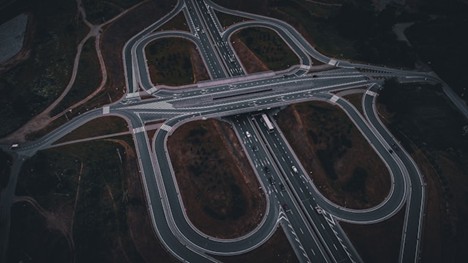
In the modern era of smart cities, urban mobility is experiencing a profound transformation. At the core of this evolution is a groundbreaking innovation: digital twins - virtual replicas of physical assets, systems, or processes that are continuously updated using real-time data. When applied to traffic systems and enhanced with GNSS (Global Navigation Satellite System) integration, digital twins open new possibilities for transportation planning, infrastructure optimization, and intelligent mobility management.
A key enabler of this technology is the collaboration between software developers, city planners, and hardware providers, including GPS suppliers who ensure a steady stream of accurate and reliable location data from satellites. These suppliers play a vital role in equipping simulation systems with the precise geospatial inputs necessary to maintain real-time synchronicity between physical and digital environments.
A digital twin in the context of traffic is a dynamic, virtual representation of a transportation system that reflects the state of roads, intersections, traffic signals, and vehicles in real time. By combining simulation software with sensor data, including GNSS trajectories, these twins enable urban planners, engineers, and traffic managers to visualize, analyze, and optimize the movement of people and goods across a city.
Unlike traditional traffic models, which are often based on historical averages or static assumptions, digital twins provide a live feedback loop between the real and virtual world. They allow cities to not only simulate what is happening but to forecast what will happen - and adjust accordingly.
Note: GPS itself isn’t tracking anyone. That’s a common myth that makes people uneasy about using location-based tools. GPS is a one-way signal, the satellites send out information, but they don’t receive anything back. So unless someone has a device that’s specifically designed to record or share their location, there’s no tracking happening. When location data is gathered, like from a car or smartphone, it’s being collected by the companies that make or support those devices, not by the GPS system or the government.
GNSS technologies, including GPS (U.S.), Galileo (EU), GLONASS (Russia), and BeiDou (China), provide highly accurate, global positioning data. Modern vehicles, smartphones, delivery fleets, and public transit systems continuously transmit location and movement data, creating a digital breadcrumb trail of mobility across urban landscapes.
This live stream of GNSS data is central to keeping a traffic digital twin synchronized with reality. Here's how:
Location Tracking: GNSS provides the precise positioning of vehicles and assets, enabling real-time traffic flow visualization.
Speed and Acceleration Monitoring: Trajectories include data on speed, heading, and changes in velocity, which help assess congestion or unsafe driving patterns.
Route Analysis: By tracking how vehicles choose routes under different conditions, planners can better understand traffic dynamics and model behavioral trends.
To build a traffic digital twin, GNSS data is integrated into a broader platform that includes simulation engines, real-time analytics, AI algorithms, and traffic control infrastructure. Let’s walk through how this fusion creates a smart mobility solution:
Digital twins constantly ingest GNSS data to show current traffic flow across a city. Road segments with slow movement or abnormal vehicle density can be flagged as congested zones. Planners get a city-wide dashboard that reflects actual conditions down to specific intersections or arterial roads.
AI-driven analytics apply GNSS-based trends to forecast traffic up to several hours ahead. If GNSS data shows unusually high inbound traffic on a specific highway, the digital twin can simulate potential impacts on downstream intersections—and suggest adjustments to traffic signals or variable message signs to mitigate problems.
By monitoring how vehicles actually approach and depart from intersections, cities can dynamically optimize signal phasing and timing (SPaT). GNSS data enhances the precision of these adjustments, reducing idling time, emissions, and overall travel delay.
Digital twins don't just model moving vehicles - they also track infrastructure usage. If GNSS trajectories show consistent bottlenecks at a roundabout or bridge, engineers can simulate expansion or redesign options virtually before breaking ground.
When a crash occurs, GNSS data can detect sudden stops or vehicle clustering. The digital twin identifies the event, reroutes traffic, and shares insights with emergency responders—sometimes even before a 911 call is made.
Singapore’s Land Transport Authority has invested in building a national-level traffic digital twin that leverages GNSS and IoT data to manage congestion, transit operations, and mobility planning. With its high GNSS-equipped fleet density and smart infrastructure, the city-state can test urban policy decisions in virtual space before applying them on the ground.
Barcelona combines GNSS data from delivery trucks, rideshare apps, and public buses to power its real-time mobility platform. The city uses its digital twin to simulate low-emission zones, assess alternative routing strategies, and implement sustainable mobility plans with measurable results.
Boston uses digital twins augmented with GNSS-enabled snowplows and salt trucks to improve road clearing during snowstorms. By tracking vehicle movement and road surface conditions in real time, the city optimizes routes and resource allocation, ensuring better safety during winter events.
Creating a functioning traffic digital twin that harnesses GNSS data requires several key technologies:
Traffic Simulation Platforms: SUMO, PTV VISSIM, and Aimsun Next are widely used to model traffic flow and behavior.
Big Data Infrastructure: Tools like Apache Kafka, Spark, and cloud-based data lakes help manage the massive influx of GNSS data.
Map Matching Algorithms: These translate GNSS coordinates into actual road segments, ensuring positional accuracy.
Digital Twin Platforms: IoT-enabled environments like Siemens MindSphere or Dassault Systèmes' 3DEXPERIENCE provide holistic management.
AI & ML Models: These models analyze GNSS-derived trends and make real-time predictions for traffic optimization.

While powerful, GNSS-integrated digital twins come with their own set of challenges:
Data Privacy: GNSS data, especially from smartphones or vehicles, can reveal sensitive movement patterns. Robust anonymization and cybersecurity protocols are essential.
Accuracy in Dense Environments: Urban canyons, tunnels, and overpasses can reduce GNSS accuracy, affecting simulation fidelity.
Data Integration: Merging GNSS data with other sources - such as inductive loop sensors, cameras, and traffic counters - requires careful calibration.
Cost and Complexity: Developing and maintaining a real-time digital twin demands significant investment in infrastructure, talent, and computing resources.
As connected and autonomous vehicles (CAVs) become more prevalent, the synergy between digital twins and GNSS data will deepen. AVs will serve as both actors and sensors within the traffic digital twin - responding to simulation-driven instructions while continuously feeding fresh data into the model. This creates a self-improving mobility loop where prediction and adaptation become second nature.
The convergence of GNSS and digital twin technology is reshaping how we understand and manage urban mobility. These real-time virtual mirrors of our road systems offer not only a clearer picture of current conditions but a predictive lens into the future. As more cities adopt these tools, we move closer to a world where traffic jams are prevented before they begin, infrastructure evolves intelligently, and mobility becomes safer, greener, and more efficient.
With GNSS data as their lifeblood, digital twins are no longer just digital reflections - they are active partners in the future of smart transportation.